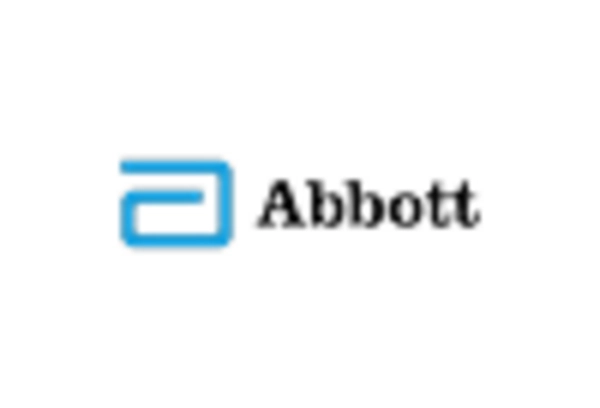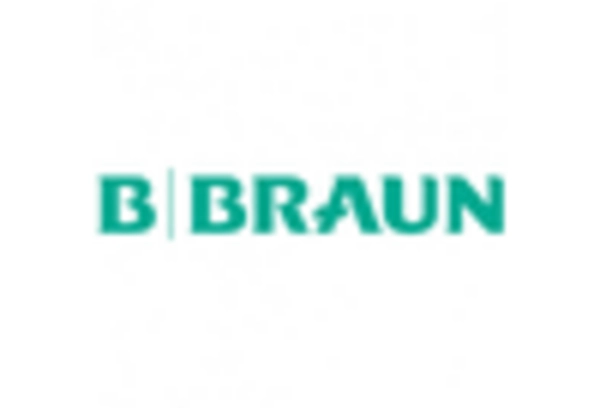Growing Aging Population
The Ultra Fine Medical Wire Market is poised for growth due to the increasing aging population, which is more susceptible to various health issues. As individuals age, the likelihood of requiring surgical interventions rises, particularly for conditions that necessitate the use of ultra fine medical wires. The World Health Organization projects that the number of people aged 60 years and older will double from 12% to 22% by 2050. This demographic shift is likely to create a heightened demand for advanced medical technologies, including ultra fine wires used in surgical and therapeutic applications. Consequently, the market is expected to expand as healthcare systems adapt to meet the needs of an older population, emphasizing the importance of ultra fine medical wires in modern medicine.
Increasing Prevalence of Chronic Diseases
The Ultra Fine Medical Wire Market is significantly influenced by the rising prevalence of chronic diseases, which necessitate advanced medical interventions. Conditions such as cardiovascular diseases, diabetes, and neurological disorders require sophisticated treatment options, often involving minimally invasive procedures. The demand for ultra fine medical wires is likely to increase as healthcare providers seek to improve surgical precision and patient safety. According to recent statistics, the incidence of chronic diseases is expected to rise by 15% over the next decade, further propelling the need for innovative medical solutions. This trend underscores the critical role that ultra fine medical wires play in the development of effective treatment modalities, thereby driving market growth.
Regulatory Support for Medical Innovations
The Ultra Fine Medical Wire Market benefits from increasing regulatory support aimed at fostering innovation in medical technologies. Regulatory bodies are streamlining approval processes for new medical devices, which encourages manufacturers to invest in research and development. This supportive environment is crucial for the introduction of ultra fine medical wires that meet stringent safety and efficacy standards. Recent initiatives have been launched to expedite the approval of devices that utilize advanced materials and technologies, thereby enhancing patient care. As a result, the market is likely to see a rise in the introduction of innovative products that leverage ultra fine wires, contributing to overall market growth and improved healthcare outcomes.
Technological Innovations in Medical Devices
The Ultra Fine Medical Wire Market is experiencing a surge in technological innovations that enhance the performance and capabilities of medical devices. Advancements in materials science and engineering have led to the development of ultra fine wires that are not only stronger but also more flexible. This flexibility allows for better maneuverability in complex surgical procedures. Furthermore, the integration of smart technologies, such as sensors and data transmission capabilities, is becoming increasingly prevalent. These innovations are expected to drive the market, as they improve patient outcomes and reduce recovery times. The market for medical devices utilizing ultra fine wires is projected to grow at a compound annual growth rate of approximately 8% over the next five years, indicating a robust demand for these advanced solutions.
Rising Demand for Customized Medical Solutions
The Ultra Fine Medical Wire Market is increasingly driven by the rising demand for customized medical solutions tailored to individual patient needs. Healthcare providers are recognizing the importance of personalized medicine, which often requires specialized tools and materials, including ultra fine medical wires. This trend is particularly evident in fields such as cardiology and neurology, where precision is paramount. The ability to customize medical devices not only enhances treatment efficacy but also improves patient satisfaction. Market analysts suggest that the customization trend could lead to a significant increase in the adoption of ultra fine medical wires, as manufacturers strive to meet the specific requirements of healthcare professionals and patients alike.


















Leave a Comment